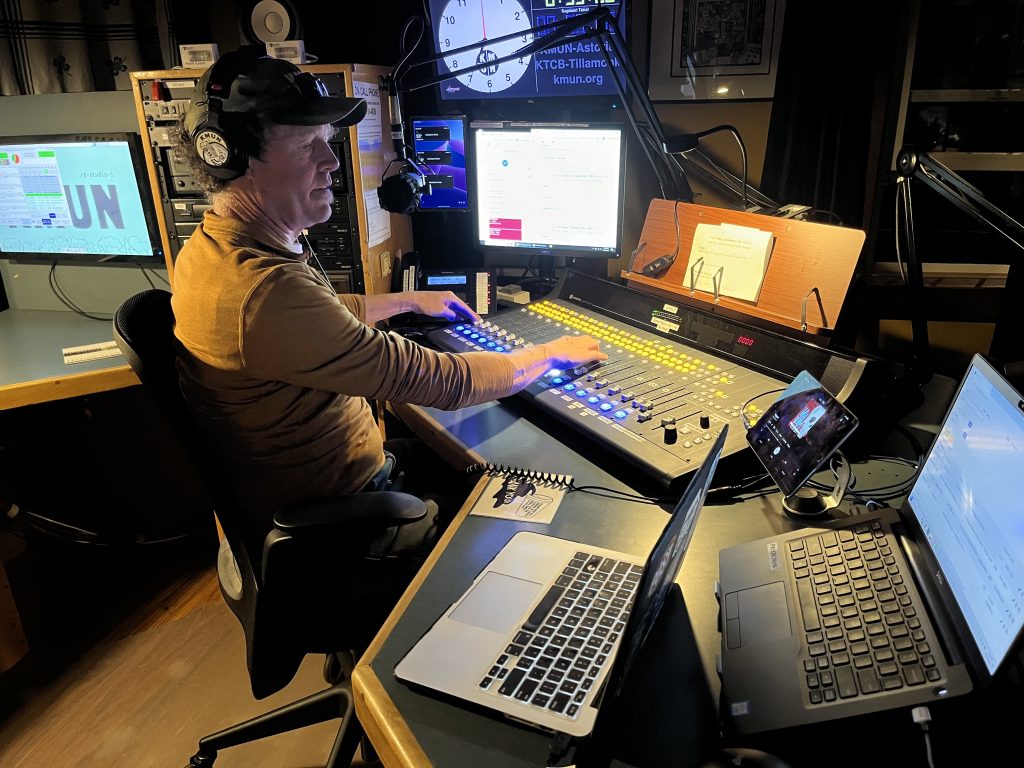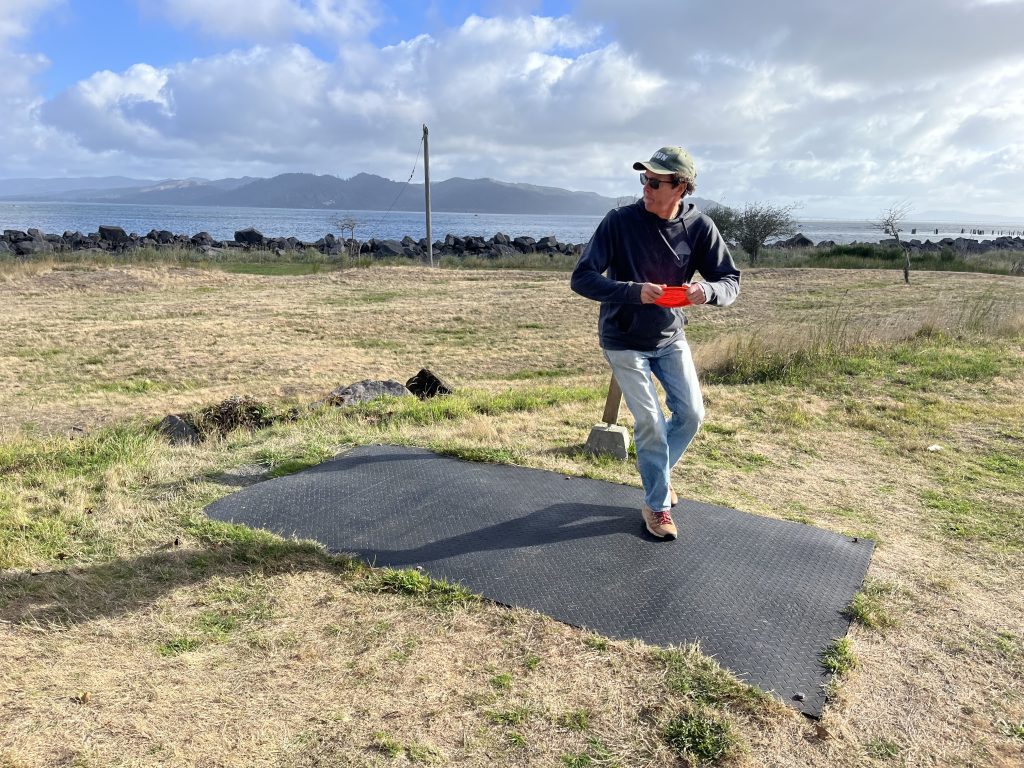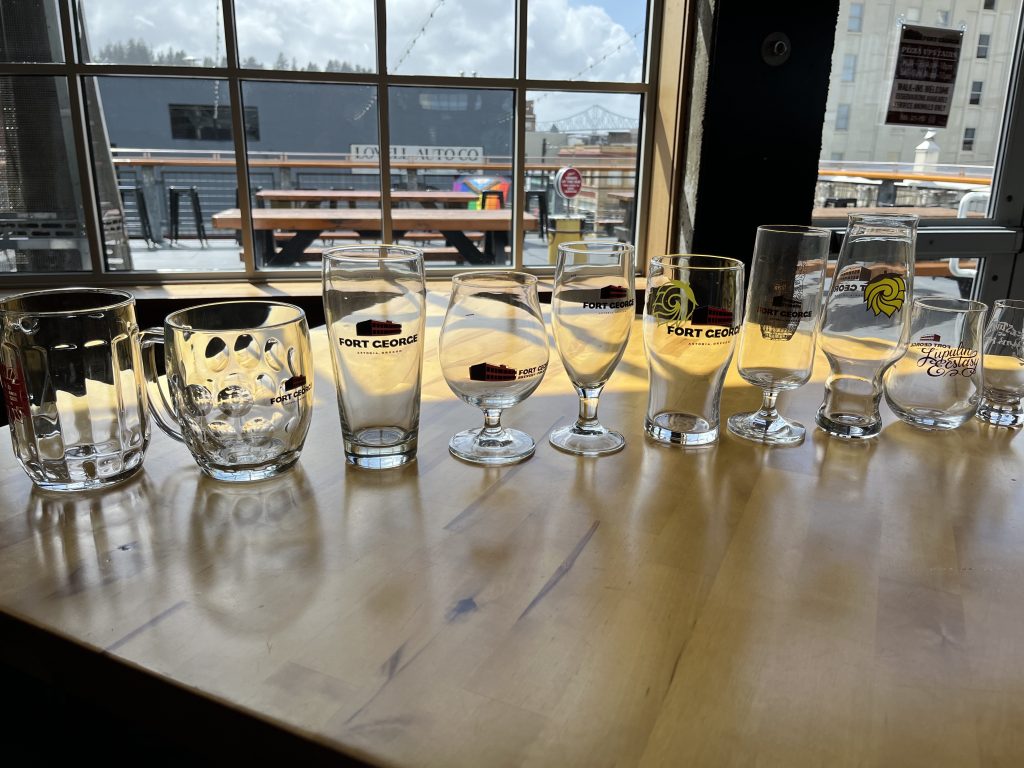By William Dean
When Jack Harris reflects on his decision to exit the craft brewing world, he offers a shrug, a smile and something vague about “evolving.”
Harris is seldom short of words, but during a recent interview the co-founder of Astoria’s Fort George Brewery is unusually measured.
Why, he is asked, did he walk away from a highly successful brewery at the age of 54?
After an award-winning beer-making career spanning decades wouldn’t he miss it terribly?
He shrugs again, as if a cosmic force is in charge and he’s just along for the ride.
In case you didn’t know, Harris was the head brewer at Bill’s Tavern in Cannon Beach when he gave Chris Nemlowill his first job in brewing.
A few years later, in March 2007, the pair took a leap of faith, founding Fort George as a modest Duane Street brewpub with a loan and a few hundred bucks to spare.
The brewery’s success is well-documented and fairly obvious. One peek inside the enormous main brewing facility on the south bank of the Columbia River provides sufficient evidence. Some 32,000 barrels of beer (roughly a million gallons) are now filled annually – seventh-most in Oregon, according to the Brewers Association.
But as Fort George soared, Harris quietly stepped aside.
He signed the corporate divorce papers in 2019, the year the waterfront warehouse complex was acquired, wrapping up his official duties a year or so later. There was no formal announcement, no farewell bash or headline in the local paper.
Just how Harris wanted it.
“I never really had a plan for my life,” he says while sipping a cider at Obelisk Beer Co. on Bond Street. He’s the epitome of laid-back casual, sporting a KMUN ballcap and Fort George sweatshirt, both well worn. Under his bottom lip stretches a graying soul patch.
“How do you end up anywhere? Choices come and choices go,” he continues. “I just try to put myself in a position to have opportunities. And when an opportunity arises, I try to be in a position to grab it.”
An opportunity did come along. And he did grab it – after some anxious conversations with his wife Tracy Erfling. But more about that later. First, there’s that nagging question: Why leave Fort George?
It helps to know that Harris is a small-town kind of guy with modest aspirations. He grew up in Sandy, nestled in the shadow of Mount Hood.
He graduated from high school there, then went on to major in geology in college. He never put that education to work, instead discovering a passion for making beer. That led to stints working for a brewery in Boulder, Colo., and at McMenamins and Bill’s Tavern in Oregon. By the time he launched Fort George, Harris had already pocketed three gold medals for his brews.
As the Astoria brewery grew, Harris transitioned from hands-on brewing to managing the people side of the business. He enjoyed the challenge. And yet he left, right on cue.
He had planned to retire when his son Tovery finished high school in Astoria and when that time came he didn’t waver.
“I don’t think it was a big deal for Jack to step away,” says Fort George marketing director Brian Bovenizer, who was hired by Harris 15 years ago. “He was pretty vocal about it: When Toveri graduated, he was going to be retired.”
That’s true, Nemlowill says, but so is how hard he and Harris worked building up the brewery, seldom able to take days off.
“He just wanted more freedom, more time to play disc golf,” Nemlowill says from a booth in the brewpub. “But Jack will always be a part of this place.”
___
The original retirement plan called for Harris to move to the charming central Oregon town of Sisters, where he and Tracy would renovate his grandparents’ home.
They got the remodeling done during the pandemic, but then Harris started getting antsy. He longed for Astoria and his North Coast pals.
“I spent two years wandering around the West, playing disc golf with my little dog and not doing much else,” he recalls. “I looked for a bunch of volunteer opportunities in Sisters and nothing was really sticking.
“I kept ending up back here [in Astoria] because I missed all of my friends … so last fall, I was sitting over in Sisters and I told Tracy that I have to do something different. This not doing anything wasn’t working.”
With brewing in his rear-view, Harris turned from one passion to another: public radio.
In a classic bit of serendipity, he saw an ad for the program director job at KMUN, the National Public Radio station in Astoria founded 41 years ago.
Harris had been a volunteer DJ at the station since 1998, initially commuting from Cannon Beach to do a freewheeling 10 to midnight show aptly called “Late Night Radio.”
“I could go from Frank Sinatra to Metallica in three songs,” he says with a smile. “Really eclectic. You could play whatever you wanted as long as it kinda made sense.”
Over the years, his shows morphed to a folk music slot on Thursdays, then a Grateful Dead-inspired program on Friday nights, and most recently a Sunday gospel hour.
After discussions with his wife about maintaining a long-distance relationship and two homes instead of one, Harris applied for the management job.
Susan Peterson, the station manager, says it was an “oh-my-God!” moment when Harris, supposedly in full retirement mode in Sisters, called late last year to tell her he was interested in the post.
There were four other candidates, but she says “Jack floated to the top” thanks to his ample on-air experience, good-natured personality and passion.
“He’s consistent and kind and thoughtful,” she says. “Always bringing good ideas to the table.”
Nemlowill chuckles when asked about his former partner’s new gig. He knew Harris would have a hard time not working – and radio is close to his heart.
“I think it’s truly his dream job,” Nemlowill says.

Harris started in February, working fulltime but continuing his DJ work on Friday nights and weekends. There was no announcement, other than his picture and new title suddenly appearing on the KMUN website.
While Harris wondered if the “desk job” – his first – would drive him crazy, he quickly embraced the part that involves training on-air contributors. As for the management responsibilities, there’s been a learning curve.
“There’s a lot of technical things you have to do, as far as FCC reporting and keeping the public file up to date,” he says. “I learned so much more about technology: sound editing, sound quality, downloading programs …”
He also has to be on top of the syndicated shows the station carries and all of the local programming.
“Basically, I describe the job as cat-herding. There’s a hundred volunteers, and you need to make sure that all the spots on the calendar are full.”
But there are rewards as well.
On the calendar, syndicated shows are shaded pink. Pre-recorded local programs are light green. Live local offerings, the most prized, are dark green.
“I’ve turned a whole bunch of the pink to green,” he says. “We’re almost back to where we were pre-pandemic. ‘Live on air’ is where our strength is.”
___
When he’s not working, Harris can often be found at the scenic disc golf course at Fort Stevens, accompanied by Rosie, his pint-sized “Texas rescue dog.”
Dodging piles of elk scat, he strides from hole to hole. Strapped across his shoulders is a special backpack brimming with 15 discs of different colors and thickness – “putters” and “drivers” and more.
It’s equal parts Zen and sport to the tournament-tested Harris, who approaches each toss with fierce concentration, the follow-through rippling through his slender frame.

When he’s within putting range, he plants his feet squarely, takes a deep breath followed by a rocking, prayerful motion before flicking the disc into the steel basket. Then it’s quickly off to the next hole, over a rise and through some trees.
He waxes poetic about the flight of the disc, which he describes as “a round wing.”
“The interaction of myself and this piece of plastic,” Harris says when asked what he likes best about the sport. “The air and the wind, the distance and the trees, the ground and the basket.
“So gorgeous. So cool.”
___
It’s Friday night and Harris is in his happy place – the “on air” room at KMUN.
He’s got his headphones on, one hand scrolling the playlist on his laptop, the other on the mixing board adjusting the volume.
An obscure funky jam by the Grateful Dead is playing, but what listeners can’t see is the best part: The DJ’s blue eyes are twinkling. A big smile creases his face.
He’s been doing this for 26 years, including eight years also serving on the station’s governing board. For all that he was never paid.
“I’ve always loved radio,” he says. “I’ve always been a guy who would sit and listen to my radio all night long. I’d listen to baseball games. As a kid, I’d wait for my favorite song to come on so I could record it, you know, and make mix tapes.”

It’s through that lens that Harris sees radio making a comeback in an era of tech overload. He speaks about it fervently, like a preacher.
“I think people are really frustrated right now with technology,” he says. “You don’t own anything anymore. You used to have a piece of vinyl. You used to have a CD. And then people started selling you more ephemeral things, like you could stream this, you could subscribe to this service. You don’t really own anything.
“And then there’s the privacy. The tracking. Everything you do online is tracked and sold to many, many other people. They know what you’re listening to every minute.
“The radio that’s been sitting on your kitchen counter for 20 years? The interface is on-off, louder-quieter, different station-different station. Nobody knows what you’re listening to. Nobody can tell how many times you’ve listened to a show.
“People are getting sick of the fact that everything they do and listen to and want to look at or hear is tracked and sold. And radio is an escape from that.”
Amen. As for the new program director job, he says it’s fun and challenging – and that’s all that matters.
He resists the notion that what he’s doing now represents a second career, a follow-up to brewing.
“I told them from the beginning, three to five years,” he says. “This is not my next thing.”
___
WILLIAM DEAN is a novelist and former investigative journalist who enjoys writing about the art of craft brewing. Astoria Beer Zone is his blog.
This story originally appeared in the November 2024 issue of HIPFiSH Monthly.




